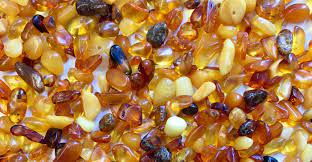
Breaking News
 Third Time's The Charm: SpaceX Starship Megarocket Blasts Off From Starbase
Third Time's The Charm: SpaceX Starship Megarocket Blasts Off From Starbase
 First Ever: Technocracy Roundtable Streaming Today
First Ever: Technocracy Roundtable Streaming Today
 Comcast Network Horror: Summer Ratings Crash 49%, Advertisers In Major Bind
Comcast Network Horror: Summer Ratings Crash 49%, Advertisers In Major Bind
Top Tech News
 Magnetic Fields Reshape the Movement of Sound Waves in a Stunning Discovery
Magnetic Fields Reshape the Movement of Sound Waves in a Stunning Discovery
 There are studies that have shown that there is a peptide that can completely regenerate nerves
There are studies that have shown that there is a peptide that can completely regenerate nerves
 Swedish startup unveils Starlink alternative - that Musk can't switch off
Swedish startup unveils Starlink alternative - that Musk can't switch off
 Video Games At 30,000 Feet? Starlink's Airline Rollout Is Making It Reality
Video Games At 30,000 Feet? Starlink's Airline Rollout Is Making It Reality
 Automating Pregnancy through Robot Surrogates
Automating Pregnancy through Robot Surrogates
 SpaceX launches Space Force's X-37B space plane on 8th mystery mission (video)
SpaceX launches Space Force's X-37B space plane on 8th mystery mission (video)
 This New Bionic Knee Is Changing the Game for Lower Leg Amputees
This New Bionic Knee Is Changing the Game for Lower Leg Amputees
 Grok 4 Vending Machine Win, Stealth Grok 4 coding Leading to Possible AGI with Grok 5
Grok 4 Vending Machine Win, Stealth Grok 4 coding Leading to Possible AGI with Grok 5
Compounds in Amber Could Help Fight Drug-Resistant Bacteria Superbugs, Scientists Find

For centuries, people in Baltic nations have used ancient amber for medicinal purposes. Even today, infants are given amber necklaces that they chew to relieve teething pain, and people put pulverized amber in elixirs and ointments for its purported anti-inflammatory and anti-infective properties.
Now, scientists have pinpointed compounds that help explain Baltic amber's therapeutic effects and that could lead to new medicines to combat antibiotic-resistant infections.
Each year in the U.S., at least 2.8 million people get antibiotic-resistant infections, leading to 35,000 deaths, according to the U.S. Centers for Disease Control and Prevention.
"We knew from previous research that there were substances in Baltic amber that might lead to new antibiotics, but they had not been systematically explored," says Elizabeth Ambrose, Ph.D., who is the principal investigator of the project. "We have now extracted and identified several compounds in Baltic amber that show activity against gram-positive, antibiotic-resistant bacteria."

 CODEX 9/11
CODEX 9/11  HERE COMES THE MOTHERSHIP
HERE COMES THE MOTHERSHIP Venus Aerospace Hypersonic Engine Breakthroughs
Venus Aerospace Hypersonic Engine Breakthroughs

